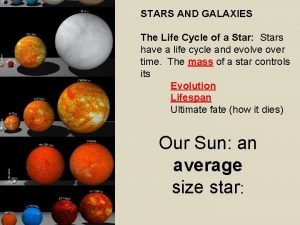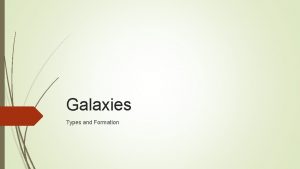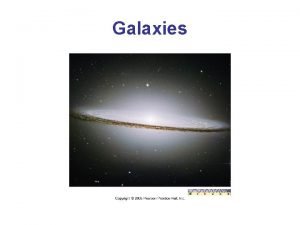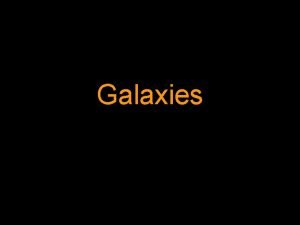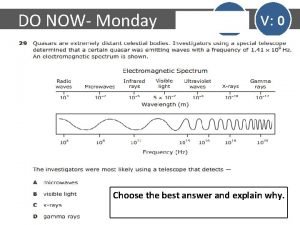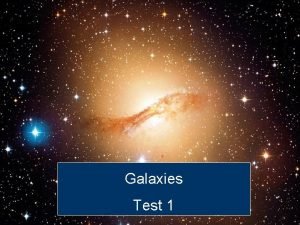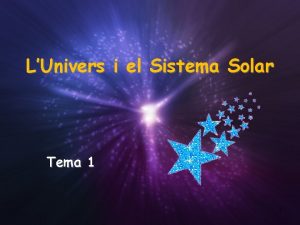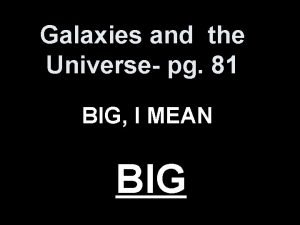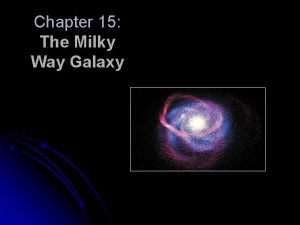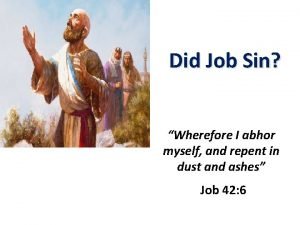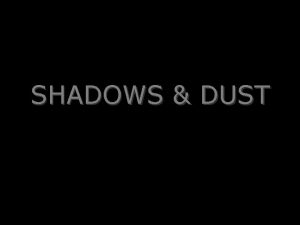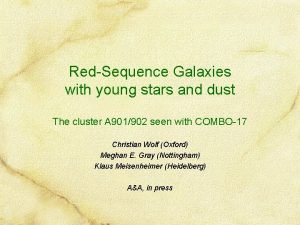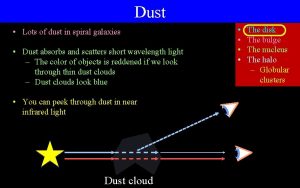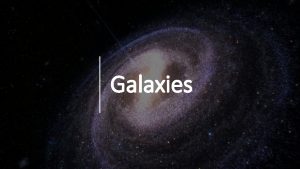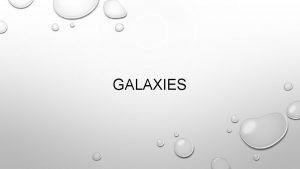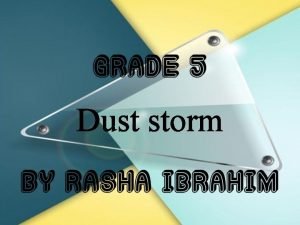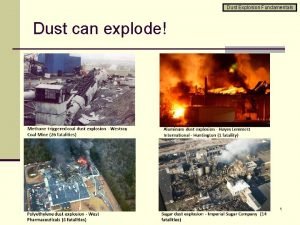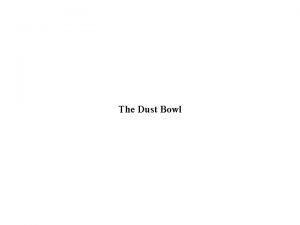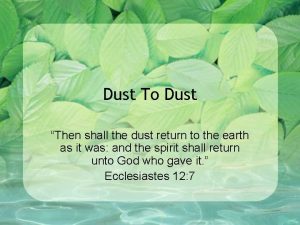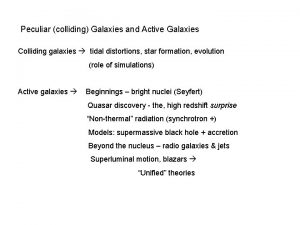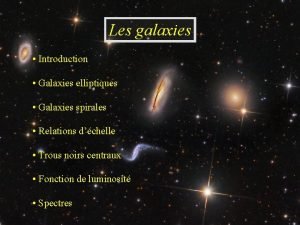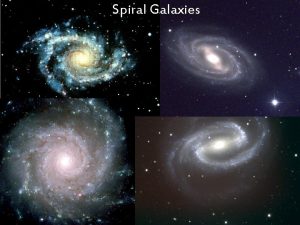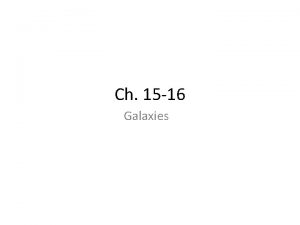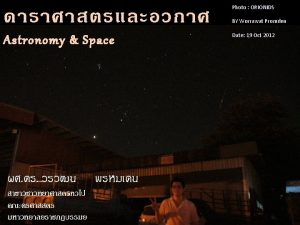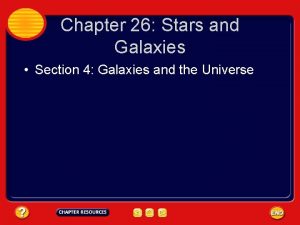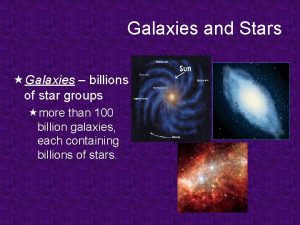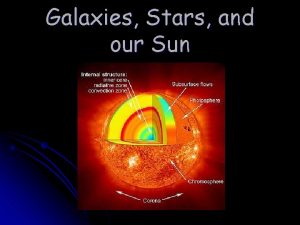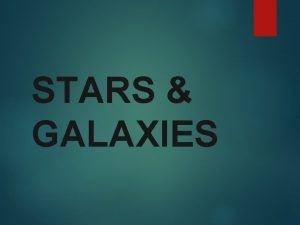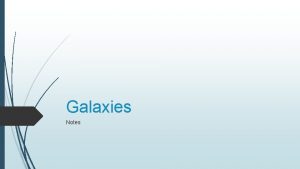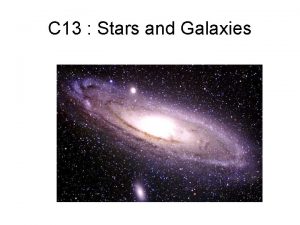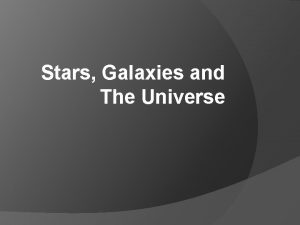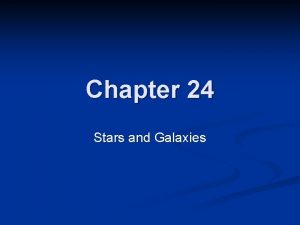RedSequence Galaxies with young stars and dust The






























- Slides: 30

Red-Sequence Galaxies with young stars and dust The cluster A 901/902 seen with COMBO-17 Christian Wolf (Oxford) Meghan E. Gray (Nottingham) Klaus Meisenheimer (Heidelberg) A&A, in press

Testing ground: the A 901/902 supercluster A 901 a A 901 b A 902 z=0. 16: ~5 x 5 Mpc A 902

COMBO-17 SEDs • SED classification ~98% complete at R<23 – Stars (~2000)

COMBO-17 SEDs • SED classification ~98% complete at R<23 – Stars (~2000) – White Dwarfs (13)

COMBO-17 SEDs • SED classification ~98% complete at R<23 – Stars (~2000) – White Dwarfs (13) – Galaxies (~6000)

COMBO-17 SEDs • SED classification ~98% complete at R<23 – Stars (~2000) – White Dwarfs (13) – Galaxies (~6000) – QSOs (~100)

Redshift Accuracy But first photo-z trials in 2002: 1/4 galaxies wrong!!!

Selecting The Cluster Sample zphot = 0. 170 ± 0. 006 cz = 1900 km/s 795 galaxies within 1575 = 3. 7 x 3. 5 x 120 (Mpc/h)3

Field Sample COMBO-17 field @ 0. 05<z<0. 25 excluding overdensities 385 galaxies from 9750 (Mpc/h)3 with <z>=0. 172

Colour-Magnitude Diagram COMBO-17 evolving red-sequence fit @ 0. 2<z<1. 2 795 galaxies = 462 red-sequence + 333 blue-cloud (field: 62=13+49)

2 -D Family: Age x Extinction

What is in the Red Sequence? • Examine age x extinction diagram • Try splitting red-sequence: – Dust-free old clump • Cleaner sample of old red galaxies – Dusty contaminants • What are these? • Blue cloud as usual • Regular star-forming galaxies

Dust-free old clump Dusty red contaminants Blue cloud

Templates: Old vs. Dusty Red Dusty red galaxies are - redder at red end - bluer at blue end than old red galaxies

Old vs. Dusty Near 4000 A

Mean Spectra: Old / Dusty Trends in continuum colour and spectral lines!

Mean Spectra

Ratio Spectrum: Dusty/Old

Population Mix: Cluster / Field Enhanced / redder

2 -D Clustering Old red = cluster cores Dusty red ~ blue cloud

(x, y): old red = cluster cores dusty red ~ blue cloud v ~ 1400 km/s v ~ 550 km/s (y, z): old red ~ dusty red blue cloud = ‘voids’

Luminosity Distribution

Type-Density Relation field cluster

A “Third Party”(? ? )… • Three types of galaxies: 1. Old red, passively evolving 2. Intermediate 3. Young blue, actively star-forming • Intermediate properties – – – • Ages: intermediate or “old + young” Star formation: Little but present Colour: like red / Dust: like blue galaxies Luminosities: intermediate Habitat: medium-density preferred Small contribution from edge-on disks

Origin of Intermediate Type • Transformed infalling blue galaxies: • Contra: • Minor mergers: established large old cluster elliptical + infalling small blue galaxy – Luminosity of progenitors – High mean stellar ages • Pro: • Age sequence: cores - intermediates outskirts - field • Pro: – Spirals redder as well (Butcher-Oemler effect) – Properties fine without invoking special process – High-luminosity and old-age component required • Contra: – Very few undisturbed established old cluster ellipticals in outskirts left

Summary: Data & Galaxy Types • COMBO-17 surveys dynamically complex supercluster Abell 901/902 • photo-z’s provide ~800 galaxies at MV<-17 • Detailed 17 -band SED - age x extinction grid • More than 1/3 of the red-sequence are not old red galaxies, but dustier intermediate-age ones • Added complexity in colour-density relation: dusty red galaxies don’t conform with old red or young blue

Summary: Properties of Dusty Red Galaxies • • • Peak at mid-density (40%) Form interface between blue and old red Currently forming stars Have plenty of old stars Result of – Environmentally triggered transformation of infalling blue galaxies – Age sequence – Minor merger of infalling blue galaxy into old red cluster elliptical

Outlook: Spitzer 24 Analysis • Most EB-V>0. 2 red-sequence galaxies are luminous 24 sources • Bell et al. in prep.

Outlook: Morphology WFI@2. 2 COMBO-17 HST/ACS STAGES Gray et al.

STAGES: Center of A 901 a WFI@2. 2 HST/ACS
 The electromagnetic spectrum includes
The electromagnetic spectrum includes There are millions of stars in the sky
There are millions of stars in the sky Chapter 30 galaxies and the universe
Chapter 30 galaxies and the universe Spiral galaxy elliptical galaxy irregular galaxy
Spiral galaxy elliptical galaxy irregular galaxy Life cycle of galaxies
Life cycle of galaxies Facts about elliptical galaxies
Facts about elliptical galaxies Galaxies
Galaxies Era of galaxies
Era of galaxies Most galaxies in the inner region of a large cluster are
Most galaxies in the inner region of a large cluster are Types of galaxies
Types of galaxies Brainpop galaxies quiz answers
Brainpop galaxies quiz answers 4 types of galaxies
4 types of galaxies How are galaxies classified? *
How are galaxies classified? * Tipus de galaxies
Tipus de galaxies Type of galaxy
Type of galaxy Evolution of galaxies
Evolution of galaxies Universe pg
Universe pg Galaxies lesson plan
Galaxies lesson plan Sin 22 5
Sin 22 5 Rp tsade
Rp tsade Used to lay out any noncircular curve
Used to lay out any noncircular curve Hình ảnh bộ gõ cơ thể búng tay
Hình ảnh bộ gõ cơ thể búng tay Bổ thể
Bổ thể Tỉ lệ cơ thể trẻ em
Tỉ lệ cơ thể trẻ em Gấu đi như thế nào
Gấu đi như thế nào Tư thế worms-breton
Tư thế worms-breton Hát lên người ơi
Hát lên người ơi Môn thể thao bắt đầu bằng chữ đua
Môn thể thao bắt đầu bằng chữ đua Thế nào là hệ số cao nhất
Thế nào là hệ số cao nhất Các châu lục và đại dương trên thế giới
Các châu lục và đại dương trên thế giới




